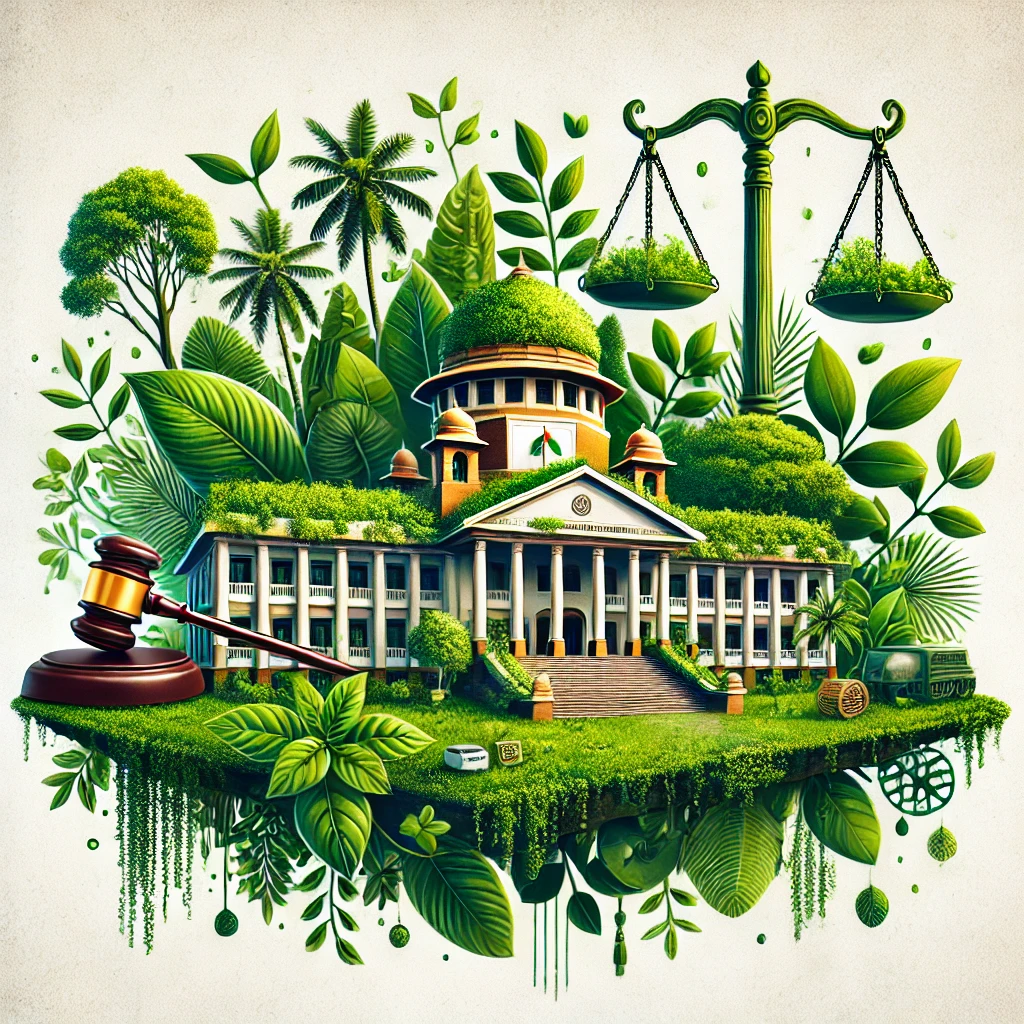Environmental laws at Serbia
Serbia has established a legal framework to address environmental protection and sustainable development, aligning its policies with international environmental standards and European Union (EU) directives, particularly as part of its EU accession process. Environmental laws in Serbia aim to protect air, water, soil, biodiversity, and natural resources while promoting sustainable economic development. Below is an overview of key environmental laws and regulations in Serbia.
1. Environmental Protection Law (2016)
The Environmental Protection Law is the central piece of legislation governing environmental protection in Serbia. It sets out the general principles, goals, and framework for environmental governance.
General Principles: The law emphasizes the protection of the environment as a fundamental right for the citizens of Serbia. It incorporates the precautionary principle, the principle of sustainability, and the "polluter pays" principle.
Environmental Protection Agency (SEPA): The law establishes the Serbian Environmental Protection Agency (SEPA), which is responsible for overseeing environmental protection activities, monitoring environmental conditions, and enforcing regulations.
Environmental Permits: The law requires companies and individuals to obtain environmental permits before engaging in activities that may have a significant impact on the environment, such as industrial activities, waste management, and construction projects.
EIA (Environmental Impact Assessment): It mandates that an Environmental Impact Assessment (EIA) be conducted for projects that may significantly affect the environment, ensuring that developers consider potential environmental impacts before proceeding with projects.
2. The Law on Integrated Pollution Prevention and Control (IPPC) (2004)
This law is aligned with the EU Industrial Emissions Directive and governs industrial activities to reduce air, water, and soil pollution.
Integrated Permits: The law requires operators of industrial plants to obtain an integrated pollution prevention and control permit (IPPC permit) that covers air, water, and waste emissions. The permits set emission limits and monitoring requirements.
Best Available Techniques (BAT): The law encourages the use of Best Available Techniques (BAT), a principle that promotes the use of the best available methods and technologies to minimize pollution from industrial operations.
3. The Law on Waste Management (2009)
The Law on Waste Management regulates the management of waste in Serbia, including waste prevention, disposal, recycling, and treatment. This law aligns with the EU's Waste Framework Directive.
Waste Hierarchy: The law adopts the waste hierarchy principle, emphasizing waste prevention, reduction, reuse, recycling, and, as a last resort, disposal.
Waste Collection and Recycling: The law establishes mechanisms for the collection, transport, and recycling of waste, and requires companies to manage waste in an environmentally responsible way.
Packaging Waste: It includes provisions on packaging waste, requiring manufacturers to take responsibility for the collection and recycling of packaging materials they put into circulation.
4. The Law on Air Protection (2004)
The Law on Air Protection regulates air quality in Serbia and aims to reduce air pollution from industrial activities, transportation, and other sources. It aligns with EU air quality standards and includes the following provisions:
Air Quality Standards: The law sets air quality standards for pollutants such as particulate matter (PM), sulfur dioxide (SO2), nitrogen dioxide (NO2), carbon monoxide (CO), and ozone (O3), which must be maintained to protect public health and the environment.
Monitoring and Reporting: It establishes the obligation for regular air quality monitoring and reporting to assess air pollution levels across the country.
Emission Limits: The law requires industrial facilities, power plants, and other large emitters to adhere to strict emission limits and to install monitoring equipment to track air pollution.
5. The Water Law (2012)
The Water Law regulates the use, protection, and management of water resources in Serbia, ensuring that water bodies are protected from pollution and overuse.
Water Protection: The law sets standards for water quality in surface water, groundwater, and public water supplies, focusing on the protection of ecosystems, biodiversity, and human health.
Water Usage and Permits: It requires individuals and companies to obtain permits for water usage, particularly for large-scale industrial activities, irrigation, and hydroelectric power generation.
Pollution Prevention: The law includes provisions to prevent pollution of water resources from agricultural runoff, industrial discharges, and waste disposal.
6. The Nature Protection Law (2009)
The Nature Protection Law is designed to preserve Serbia's rich biodiversity, including its forests, wetlands, and protected species. This law aligns with international environmental conventions, such as the Convention on Biological Diversity (CBD).
Protected Areas: The law establishes protected areas, including national parks, nature reserves, and Natura 2000 sites, which are designated to conserve natural habitats and biodiversity.
Endangered Species: It provides legal protection for endangered species and their habitats, including prohibitions on hunting, trade, and disturbance of protected species.
Conservation Efforts: The law emphasizes the importance of conservation management plans for protected areas, involving both government and local communities in preservation efforts.
7. The Law on Environmental Noise Protection (2009)
This law is designed to reduce noise pollution, which can have adverse effects on human health and the environment.
Noise Limits: The law sets limits on noise levels for various types of activities, including residential, industrial, and transportation-related noise, with stricter regulations in urban and residential areas.
Noise Mapping: It mandates the creation of noise maps for major urban areas, which assess noise levels and help inform decision-making on urban planning and development projects.
Mitigation Measures: The law requires the implementation of noise-reducing technologies and measures in areas with high noise levels, such as buffer zones and noise barriers.
8. The Law on Genetically Modified Organisms (GMOs) (2009)
This law regulates the use, trade, and environmental release of genetically modified organisms (GMOs) in Serbia.
GMO Approval Process: It establishes an approval process for the use of GMOs in agriculture, food production, and research, ensuring that GMOs undergo rigorous safety assessments before being approved.
GMO Labeling: The law requires that food products containing GMOs be properly labeled to inform consumers about the presence of GMOs in their products.
Environmental Impact: It includes provisions to assess and monitor the environmental impacts of GMOs, particularly on biodiversity and ecosystems.
9. The Law on Environmental Protection Fund (2004)
This law establishes the Environmental Protection Fund, which is used to finance environmental projects, activities, and investments aimed at improving the country's environmental sustainability.
Funding Mechanisms: The fund provides financial resources for projects related to pollution control, waste management, biodiversity conservation, and climate change adaptation.
Public Participation: The law allows for public and private sector contributions to the fund, ensuring broad participation in environmental protection efforts.
10. International Environmental Agreements
Serbia is a party to several international environmental agreements that influence its domestic laws. These agreements include:
The Convention on Biological Diversity (CBD): Serbia commits to protecting biodiversity and promoting sustainable development.
The United Nations Framework Convention on Climate Change (UNFCCC): Serbia participates in global efforts to mitigate climate change, including efforts to reduce greenhouse gas emissions and adapt to climate impacts.
The Ramsar Convention on Wetlands: Serbia is committed to conserving its wetland ecosystems, particularly those of international importance.
The Paris Agreement: Serbia, as part of the global commitment to combat climate change, adheres to the provisions of the Paris Agreement to limit global warming and reduce carbon emissions.
Challenges and Enforcement
While Serbia has a comprehensive legal framework for environmental protection, the country faces challenges in the enforcement of these laws, including:
Lack of Resources: Limited financial and human resources can hinder the effective implementation and enforcement of environmental regulations.
Industrial Pollution: Despite progress, industrial pollution remains a significant challenge, particularly in heavy industries such as mining and energy production.
Illegal Waste Disposal: Illegal dumping of waste and inadequate waste management infrastructure continue to pose environmental risks.
Conclusion
Serbia has established a robust legal framework for environmental protection, covering air, water, waste management, biodiversity conservation, and industrial pollution control. These laws are in alignment with EU directives and international agreements, which is essential for Serbia as it seeks to join the European Union. However, the enforcement of these laws faces challenges, particularly with regard to resource limitations and industrial pollution. Continued efforts are necessary to strengthen institutional capacity, improve environmental governance, and achieve sustainable development.




























0 comments